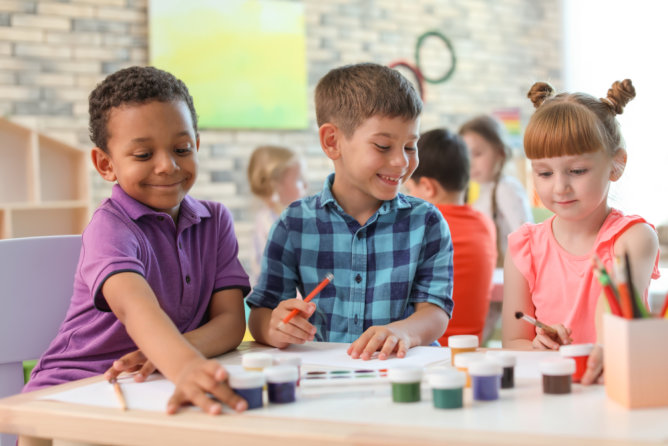When you picture a child learning, what comes to mind? Is it a quiet classroom with rows of desks and textbooks? Or maybe a child scribbling wildly with crayons, building castles from blocks, or spinning a story that only makes sense in their imagination?
Now here’s the real question: why do we so often separate the two—creativity or academics—when kids actually thrive most when they’re combined?
The truth is, creativity and academics aren’t opposites. In fact, when they work together, they give young learners the tools to think critically, solve problems, and develop a genuine love for learning. And here’s the exciting part—you, as a parent or educator, can help build this bridge.
So, how can you connect creativity with academics in a way that helps young minds flourish? Let’s explore the strategies that make it possible.
Why Creativity Matters in Academics
Have you noticed how children remember the song lyrics to their favorite tune but struggle to memorize multiplication tables? That’s the power of creativity. It transforms abstract information into something engaging, emotional, and memorable.
-
Boosts retention: Kids are more likely to remember what they learn when it’s tied to a creative activity.
-
Encourages problem-solving: Creative thinking helps children approach challenges from different angles.
-
Builds confidence: When kids see their creative ideas valued, they gain the courage to take academic risks.
Simply put, creativity makes academics come alive.
1. Make Learning Hands-On
Do you remember how exciting it felt to make something rather than just read about it? Kids feel the same.
-
In math, let them build structures with blocks to learn geometry.
-
In science, simple experiments like making slime or growing plants bring concepts to life.
-
In language arts, encourage storytelling through drawings, puppet shows, or even short videos.
When kids get their hands involved, learning shifts from passive to active—and far more enjoyable.
2. Use Stories to Teach Hard Concepts
What if multiplication wasn’t just numbers, but a story about groups of superheroes teaming up to save the day? Or history wasn’t just dates, but adventures of people who shaped the world?
Stories engage emotions, and emotions boost memory. Try weaving narratives into lessons—it makes even the toughest concepts easier to grasp.
3. Encourage Curiosity Over Perfection
Do you sometimes catch yourself focusing on the “right” answer? What if you praised the questions instead?
When kids feel safe to ask, explore, and even make mistakes, they build resilience and critical thinking skills. Creativity isn’t about perfect outcomes—it’s about exploring possibilities, and academics thrive in that space.
4. Blend Art with Core Subjects
Have you ever seen a child’s face light up while painting or drawing? Imagine channeling that energy into academics.
-
Create visual timelines for history lessons.
-
Use music or rhythm to practice multiplication tables.
-
Encourage illustrated journals to combine writing and art.
Blending art with academics helps kids see that learning isn’t siloed—it’s connected, dynamic, and full of color.
5. Leverage Technology for Creative Learning
Is your child glued to screens? Instead of fighting it, why not use it?
Interactive learning platforms, creative apps, and digital storytelling tools can merge academics with creativity in ways that feel natural to digital-native kids. The trick is guiding them toward tools that inspire, not just entertain
6. Celebrate the Process, Not Just the Product
How often do we clap for the “A” on the test but overlook the effort that went into it? When you celebrate the process—whether it’s brainstorming, experimenting, or rewriting a story—you show kids that learning is about growth, not just grades. This balance is where creativity and academics truly meet.
7. Teach Collaboration Through Creative Projects
When was the last time you saw your child’s face light up while working with others? Collaboration isn’t just about sharing crayons—it’s a vital skill that prepares young learners for both academics and real life.
Creative group projects give children the chance to:
-
Practice teamwork by dividing tasks and learning to rely on one another.
-
Develop communication skills as they explain their ideas, listen, and adapt.
-
Blend strengths—a child who loves art can illustrate while another writes or presents.
For example, instead of assigning a simple history report, encourage your child (or your students) to create a group project that combines storytelling, visuals, and even role-play. This makes academics less about memorization and more about co-creation.
The Bigger Picture
When you blend creativity with academics, you’re not just teaching kids to pass exams—you’re teaching them to think differently, work with others, and find joy in discovery. These are the skills that set them up for success in school and in life.
So here’s the challenge for you: the next time your child sits down to study, will you keep academics and creativity separate—or will you bridge the two and unlock their full potential?

